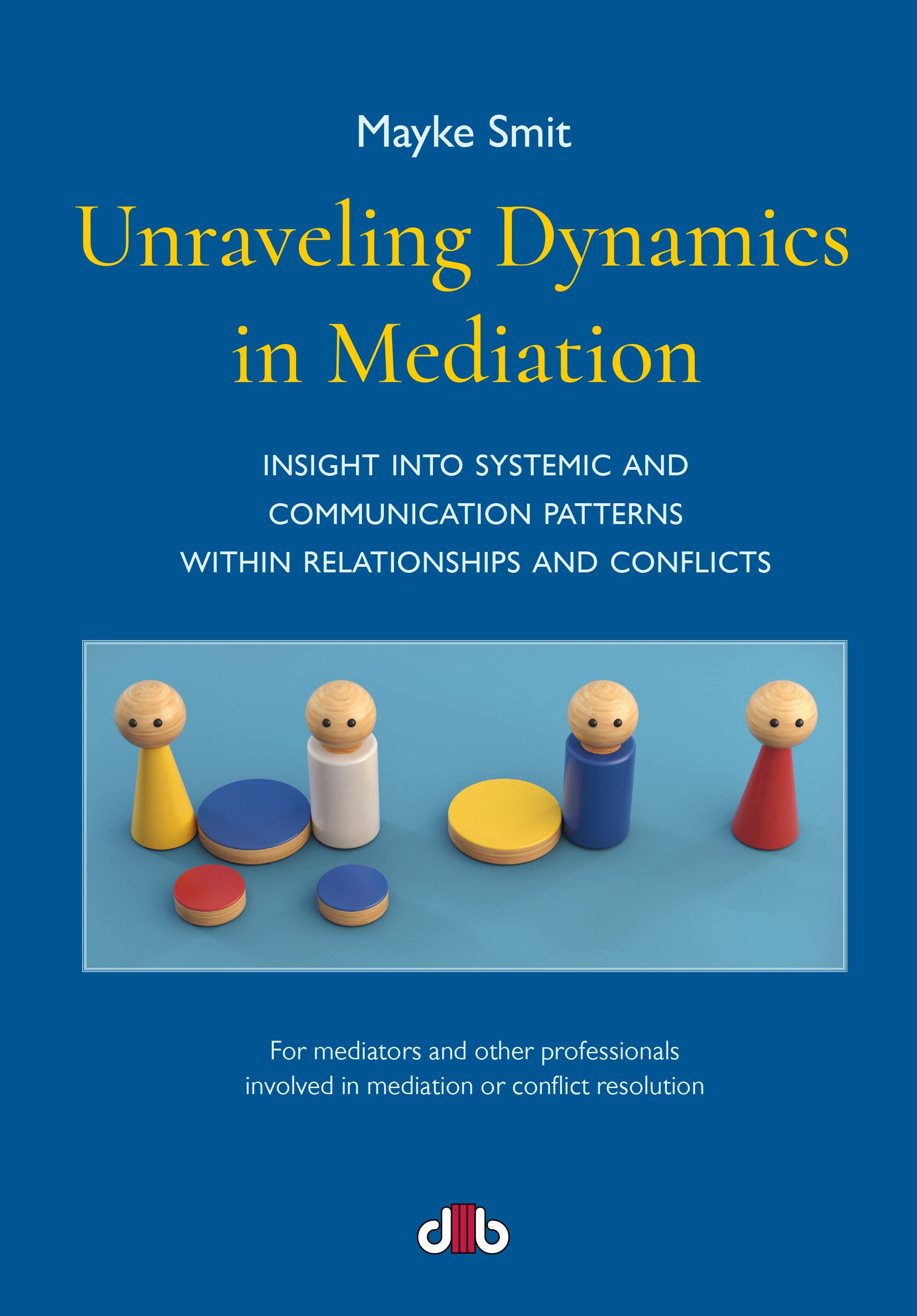Samenvatting
Unraveling Dynamics in mediation - Insight into systemic and communication patterns within relationships and conflicts - For mediators and other professionals involved in mediation or conflict resolution - As a mediator, there is one important aim: to resolve the conflict for both parties in the most optimal way. Most of the time that works out fine. There are times, however, you can't seem to get a grasp on it. Or you think you've solved the situation and suddenly the dispute flares up again. Evidently there is more to it than meets the eye. In Unraveling dynamics in mediation, Mayke Smit reveals the undercurrent that influences the interaction between people in relationships and conflicts. She guides you into the principles of Systemic work, shows you how systemic patterns operate, and she invites you to look from a systemic perspective in order to achieve sustainable solutions. Smit distinguishes three levels of dynamics that are of significance in mediation: • The family dynamics on an individual level • The dynamics between clients • The dynamics between clients and mediator Subjects such as dealing with emotions, loss and communication patterns are covered as well. Smit describes various existing theories in a practical way for mediation in cases between two clients: divorces, labour disputes and neighbourly conflicts. By giving examples she illustrates how the theories and models can be applied with and without the use of table constellations. This book is mainly directed towards mediators and other professionals involved in mediation or conflict resolution. It is also appealing to any other person who is interested in relationships and conflict. Throughout the book Smit offers suggestions for examining and reflecting on oneself. Quotes: “The systemic mediator guides parties beyond the conflict through an apparent systemic detour, which in fact brings faster and more precise recognition and resolution. And that takes courage from the mediator. The courage to ask "crazy" questions, and the courage to process your own patterns and background as well. This book helps nurturing your courage and expertise. ” - Barbara Hoogenboom, co-owner of the Bert Hellinger Institute Netherlands and former MfN registered mediator - “Systemic thinking and working is the cement between all the knowledge and skills required in mediation. For this reason, we place it at the center of the training courses and for me personally it is one of the core elements in my mediations! ” - Prof Jan van Zwieten RI, RA, RO, MfN registered mediator
Unraveling Dynamics in mediation - Insight into systemic and communication patterns within relationships and conflicts - For mediators and other professionals involved in mediation or conflict resolution - As a mediator, there is one important aim: to resolve the conflict for both parties in the most optimal way. Most of the time that works out fine. There are times, however, you can't seem to get a grasp on it. Or you think you've solved the situation and suddenly the dispute flares up again. Evidently there is more to it than meets the eye. In Unraveling dynamics in mediation, Mayke Smit reveals the undercurrent that influences the interaction between people in relationships and conflicts. She guides you into the principles of Systemic work, shows you how systemic patterns operate, and she invites you to look from a systemic perspective in order to achieve sustainable solutions. Smit distinguishes three levels of dynamics that are of significance in mediation: • The family dynamics on an individual level • The dynamics between clients • The dynamics between clients and mediator Subjects such as dealing with emotions, loss and communication patterns are covered as well. Smit describes various existing theories in a practical way for mediation in cases between two clients: divorces, labour disputes and neighbourly conflicts. By giving examples she illustrates how the theories and models can be applied with and without the use of table constellations. This book is mainly directed towards mediators and other professionals involved in mediation or conflict resolution. It is also appealing to any other person who is interested in relationships and conflict. Throughout the book Smit offers suggestions for examining and reflecting on oneself. Quotes: “The systemic mediator guides parties beyond the conflict through an apparent systemic detour, which in fact brings faster and more precise recognition and resolution. And that takes courage from the mediator. The courage to ask "crazy" questions, and the courage to process your own patterns and background as well. This book helps nurturing your courage and expertise. ” - Barbara Hoogenboom, co-owner of the Bert Hellinger Institute Netherlands and former MfN registered mediator - “Systemic thinking and working is the cement between all the knowledge and skills required in mediation. For this reason, we place it at the center of the training courses and for me personally it is one of the core elements in my mediations! ” - Prof Jan van Zwieten RI, RA, RO, MfN registered mediator




